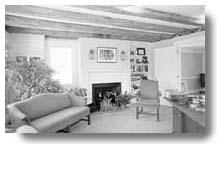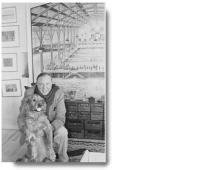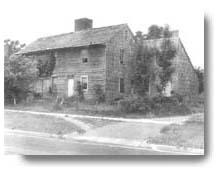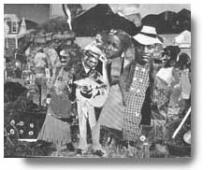The Star Talks To: Leonard Harmon, A Star Of The Bridge World
The Star Talks To: Leonard Harmon, A Star Of The Bridge World
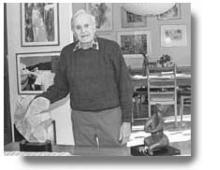
Back in 1991, Leonard Harmon got together with a few friends from the "old days" to play cards. It wasn't the ordinary neighborhood bridge club bunch having an evening reunion - or an excuse to get out of the house for a drink and some poker hands "with the boys."
Mr. Harmon, then 71, had joined his onetime card-playing colleagues in Manhattan to compete for the Reisinger Trophy in the Knockout Teams-of-Four bridge contest in the Eastern States Championships.
Writing about the event in The New York Times, Alan Truscott, the paper's longtime bridge columnist, characterized Mr. Harmon and his partners as "the sentimental favorites." They didn't win, but vying for another major bridge title was not why the men entered that tournament, nearly 20 years after Mr. Harmon had "retired" from the pinnacle of big-time bridge in North America.
For The Fun Of It
"We competed for the fun of it and to keep our hands in," said the gentlemanly, soft-spoken, and rather modest Mr. Harmon in the living room of his art and book-filled East Hampton house.
In the 1950s and '60s, Mr. Harmon was one of the bridge world's great champions, but he had not played in national competition since he and his wife, Marian, bought their Northwest Woods residence in 1974. "Once we began coming out here on weekends," he said, "I began to play less bridge in the city."
There was a time, for more than a decade, when readers of the magazine and newspaper columns of Jacoby, Goren, Morehead, and Truscott saw Mr. Harmon mentioned - or featured - with great frequency. The media coverage, including Charles Goren's 1959 Sports Illustrated story about him and the U.S. bridge team, was warranted, for he and his then-partners were very much "at the top of our game," he said.
Major Tournaments
The major bridge tournaments in the United States, Mr. Harmon explained, are the Spring, Summer, and Fall North American Championships, "called the Nationals in my time." The two big events at these competitions are the Open Pairs and Teams of Four.
Mr. Harmon, who was then - as now - an executive with the U.S. Insurance Company, played most of the time with Ivar Stakgold, who had been a professor of mathematics at Harvard and, when teamed with Mr. Harmon, worked for the Office of Naval Research in Washington.
Mr. Harmon emphasized that he and Mr. Stakgold had jobs "other than bridge" and pointed out that their major rivals, Edgar Kaplan and Alfred Sheinwold, "devoted their lives to the game."
A Very Good Year
"We had some very fine success," Mr. Harmon said of his play with Mr. Stakgold. "We had a friendly rivalry with Kaplan and Sheinwold, and we asked them to play with us, but they thought, in the beginning, that Stakgold and Harmon weren't quite good enough to play with them! Of course, we were all good friends."
"The first five times we played against them we beat them!" Mr. Harmon recalled with a smile.
Mr. Harmon first won the National Championships in 1958 with Mr. Stakgold - in Open Pairs in the Spring Nationals.
Three days later, with three partners, he won the prestigious Vanderbilt Team - named for the inventor of contract bridge, Harold S. Vanderbilt - against a team that included Mr. Kaplan and Mr. Sheinwold.
"There were lots of articles about that," he said, with rare immodesty, "and Mr. Vanderbilt even sent me a telegram of congratulations."
Coveted Title
The team of Harmon-Stakgold then won the '58 Summer Nationals, and "because I had such a good start that year," Mr. Harmon said, "I decided to try for the coveted McKenney Trophy, later renamed the Barry Crane Trophy, which is awarded to the North American player who wins the most Master points each year. And I won it."
The next year was a success, too. Mr. Harmon represented North America at the Bermuda Bowl and won the Reisinger Trophy as part of the triumphant team at the Eastern Regional Championships. And he was a member of the U.S. team that competed against Italy and Argentina at the World Bridge Championships, held in New York. "We came in second," he said.
In the 1960s and early '70s, Mr. Harmon added numerous regional titles and secondary wins to his portfolio. And while he said "nobody wants to hear about lesser titles and second or third-place wins," even a quick glimpse inside the "trophy room" at the Harmons' house shows there were dozens of victories at all levels.
Well-Stocked Trophy Room
The several heavy, tall sterling silver trophies on the shelves are impressive; they keep company with smaller cups, an assortment of inscribed silver bowls, and 50 or 60 books about bridge, "90 percent of them mentioning my husband," Mrs. Harmon said.
Also displayed, looking rather out of place but both truthful and amusing among the glitter, is one of those dime-store, three-inch-high plastic trophies which reads, "The World's Greatest Bridge Player."
He became one of the greatest only over a period of time. "I learned the game by watching my parents when I was a child," he said. "And I played in college, at New York University."
New Bidding System
During the Second World War, Mr. Harmon served in the Army-Air Force, as a bombardier with the rank of Second Lieutenant. On his second mission, over southern France on New Year's Eve in 1943, he lost an eye and was returned to his base in England. "That was the end of my combat career," he lamented, "and eventually I was discharged because of the injury."
"When I came home, I joined a group of fellows who lived in my neighborhood on Manhattan's Upper West Side, where I had grown up. We played just social bridge once or twice a week."
Mr. Harmon said he first got involved with serious bridge in the '50s. "I learned I was good at it, and I began to play with a group who also were potentially good players - and good friends. We developed our own system, rather than playing any of the bidding conventions popular then, and named it after two of the players: Alfred and Edgar."
Learned By Doing
The Kaplan-Sheinwold System is played today, more than 40 years later. Mr. Harmon sees his former friends and sometime adversaries now and again, sometimes to play - as in 1991 - sometimes socially.
Mr. Sheinwold, who wrote the Oswald Jacoby column for many years, now has his own; it is syndicated by The Los Angeles Times and appears in Newsday. Mr. Kaplan still is one of the world's best players, Mr. Harmon said.
Asked if he used bridge manuals to learn the game, he said, "No, we played and we talked about it." Added Mrs. Harmon, "It's a matter of immediate memory, unbelievable arithmetic, knowing where the cards are." She was a Life Master when she married him, but she said that after sitting down at the table three times with him, "I realized I knew nothing."
Came For The Air
The Harmons first came to East Hampton because a doctor recommended a place where the air was nice and clean, for Mrs. Harmon's respiratory problems. The air agreed with both of them: Mrs. Harmon never had to visit the respiratory doctor again, and they gradually began to give Manhattan less time and East Hampton more.
"By 1981," Mr. Harmon said with a laugh, "the air was so good here that Marian decided we should live here full time."
They sold their Manhattan apartment, enlarged their house, and became year-round residents. Mr. Harmon found that he couldn't handle the group insurance portion of his business conveniently from East Hampton, so he arranged to sell it back to U.S. Insurance, but he kept his individual life insurance clients and now, at 77, works from an office on Pantigo Road.
"We go to the city only for something really special," said Mr. Harmon. "Our life is out here." Mrs. Harmon is a sculptor who has been active in community art and literary circles and a regular contributor of poems to The Star.
Mr. Harmon plays bridge infrequently now, "once or twice a month with friends, and once or twice a year in the local duplicates in Montauk and Bridgehampton." He said that to play competitively, "you have to play frequently, and I'm not equipped to play like I was years ago - my age may have something to do with it."
He was a Life Master in 1953 (he was number 600; now there are more than 30,000) and has ruffed, sluffed, and uppercut with the best of them, but he said the average bridge player today "hasn't heard of Leonard Harmon, particularly the young."
They have if they've read the history of bridge. Or if they follow current bridge news: On his birthday in September, Mr. Harmon devised an "impossible" game; Alan Truscott wrote all about it in his syndicated column.

